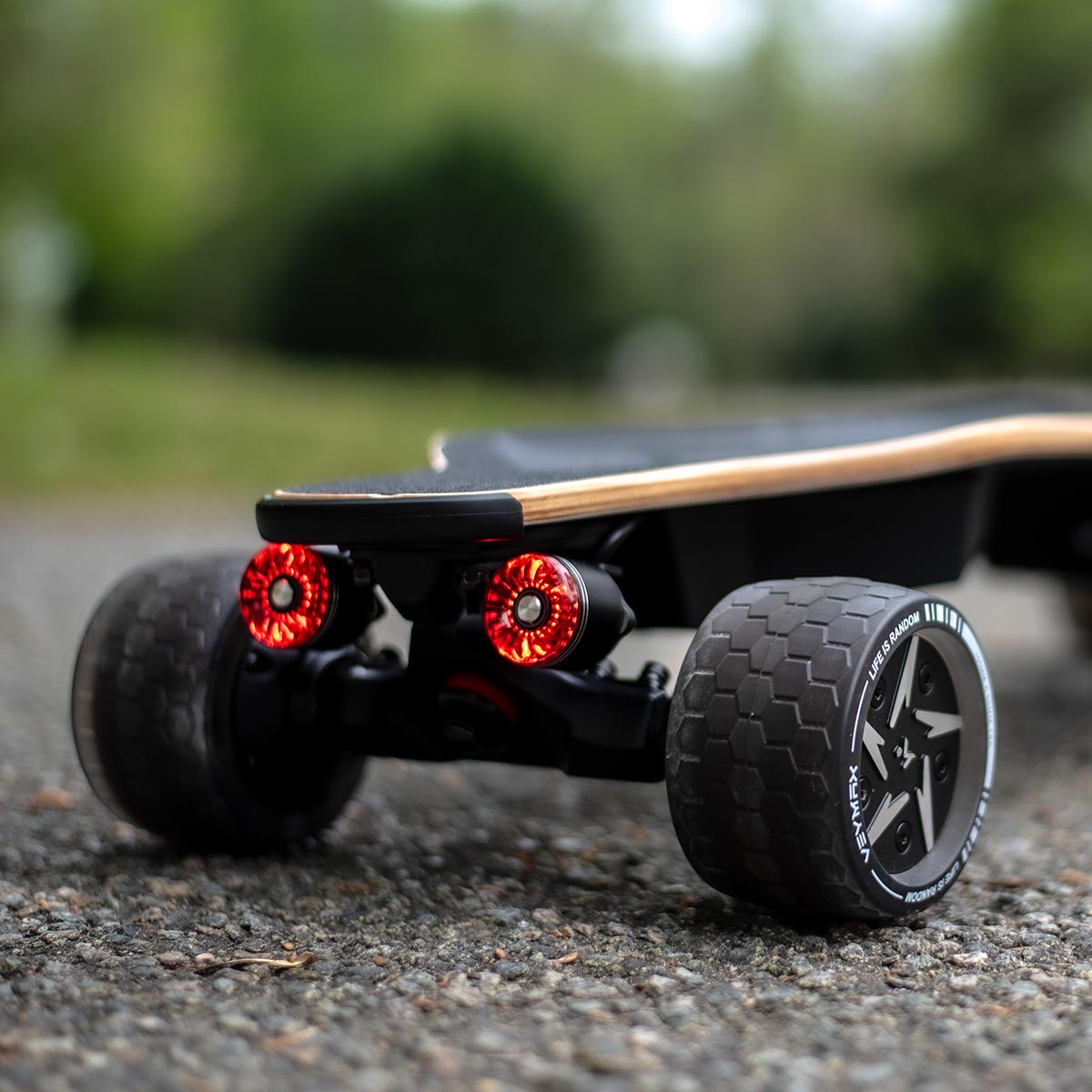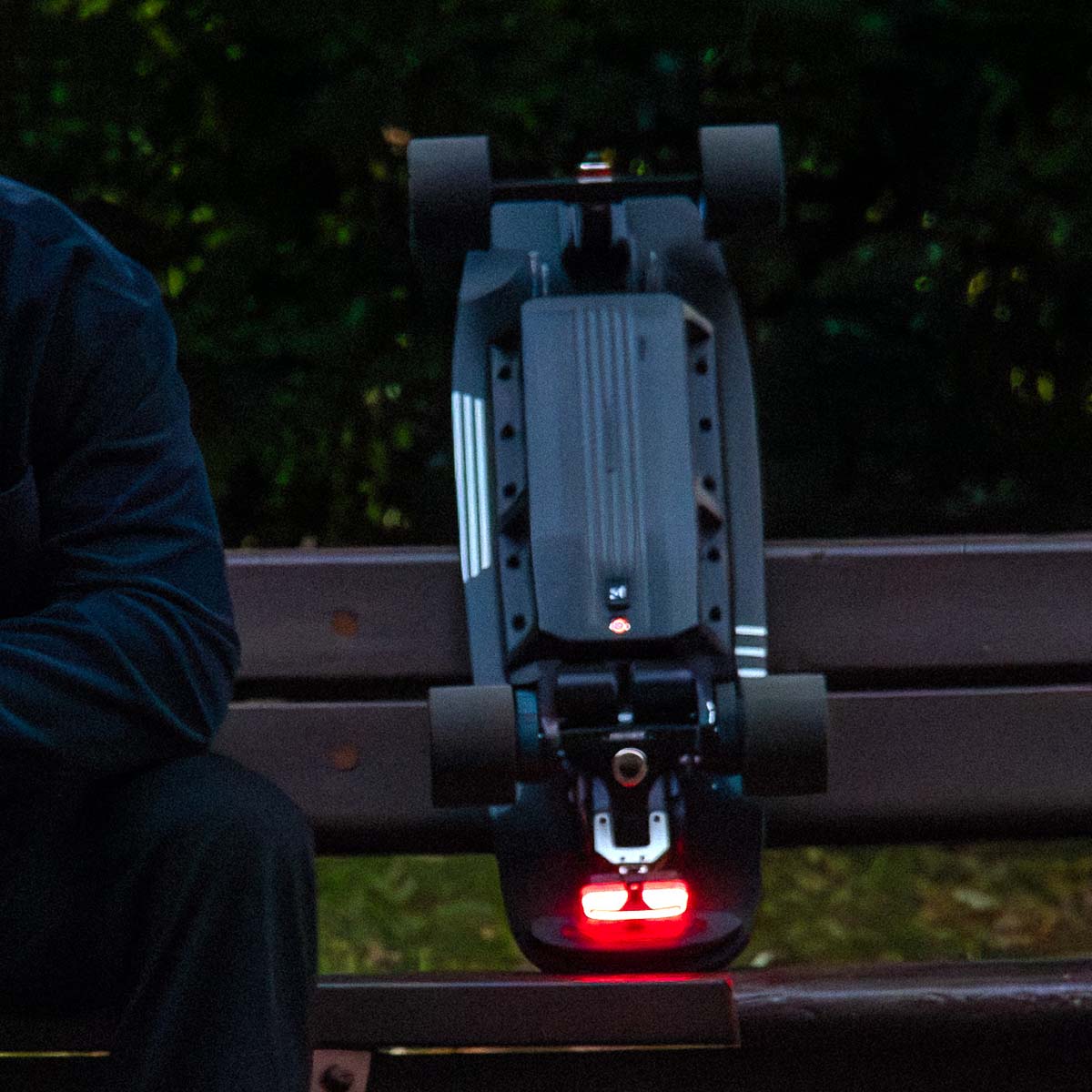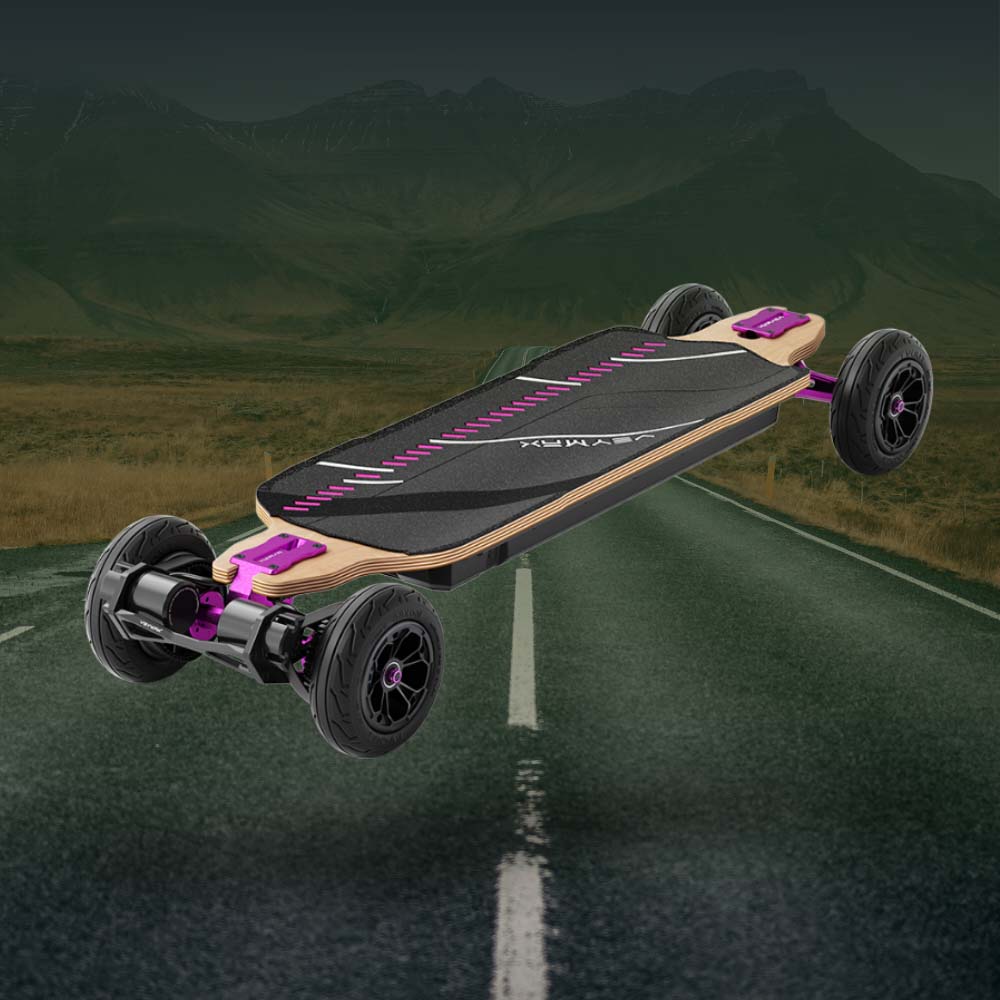Electric vehicles have weight issues, and that doesn't only apply to the electric Hummer. Most electric cars weigh hundreds, even thousands, of pounds more than their gas-powered counterparts. Almost all that extra weight comes from their batteries.
Electric skateboards rarely weigh much more than 30 lbs and can be as lightweight as less than 12 lbs. But the smaller their battery, the less battery capacity.
Thus, lighter electric skateboards tend to get less range, while long range skateboards tend to have heavy, high capacity batteries and can be impossible to carry up a flight of stairs.
There are other factors, such as the size of the motor, tires, and wheels, and the size of the rider, that affect range and weight.
A larger rider on a lightweight skateboard will get less range, and skateboards best suited for heavier riders often tend to weigh more because of suspension systems and dual motor designs.
On the whole, however, the single component weighing the most in any Electric Skateboard will be the battery, with some weighing up to 8 lbs. The larger the skateboard - and the larger its weight limit - the larger the battery will typically be.
Larger batteries mean more power and they also mean more range, with some large capacity batteries producing up to 50 miles of range or more on a single charge.
Is it possible to reduce the weight of motorized skateboards without sacrificing range?
How Lighter Skateboards Can Go Farther?
Reducing skateboard weight solves a number of problems. For one thing, it actually helps increase range.
Take any two skateboards with the same size riders, batteries, motors, and other electrical components, but significantly different weights.
The lighter skateboard will travel farther along the same route because it has less mass and therefore requires less power to move.
Where to Shed Pounds? Start with the Frame
So, where do weight savings come from in an electric skateboard? The best place to shed weight is in the frame itself, and this can be done in several ways.
It's worth noting that while an electric longboard frame serves a number of purposes, protecting the rider in the event of a crash is not one of them.
Unlike cars, we don't expect our skateboards to shield us - that's what helmets and protective gear are for - so their materials don't need to be crash-proof.
Instead, what we need from e-board frames are features that aid in ride quality, stability, and handling.
Frame geometry is important. A well-made frame can shed several grams in an aerodynamic design that also eliminates excess materials.
Like the design, the materials that make up an electric skateboard's frame, stem, handlebars, fenders, and other structural parts can significantly affect the skateboard's weight.
Materials like steel and many kinds of aluminum may be strong and durable, but they're also heavy.
Lighter metals like titanium or magnesium are stronger than aluminum, lighter than steel, and resist corrosion.
Carbon fiber can be cracked in an accident, but in general it is extremely durable, corrosion-proof, and also highly lightweight, tensile, and vibration-damping.
Frame Design
Early in the development of the bicycle, frames were made from solid iron or wood. Too heavy to pick up and carry , they were also too heavy for almost anyone to ride comfortably.
Needless to say, no one rode solid wood or iron bicycles very far.
The development of tubular steel frames revolutionized the bicycle, making frames that were much more portable, manageable, safe and fun.
While no one had to worry about running out of battery power in those days, cyclists could and did ride farther and farther on lighter frames, until in 1903 they started racing all around France.
Since then, tubular frames have shown up in motorcycle design and have also shown promise for electric skateboards.
Lighter Materials
Still, NAMI's premium skateboards reduce weight by making use of a material that has powered super-lightweight, long-distance cycling for decades: carbon fiber.
Complementing their hand-welded tubular frames, NAMI's stems are built from carbon fiber to further reduce weight and improve handling and ride quality.
Of course, in Veymax X3 PRO, 2 layers of carbon fiber, 2 layers of glass fiber and 2 layers of maple are used as the raw materials of the deck.
How to Get More Battery Life From the Same Lightweight Motorized Skateboard?
Veymax optimizes the skateboard's battery, motor power, and controllers while adding less than a pound to overall design. It's still the same ultra portable city commuter riders have loved for years. Only now it can travel up to 29 miles on a single charge.
Two of the best ways electric skateboard manufacturers can reduce weight while improving range are:
- Innovative frame design and lightweight materials
- Use batteries with larger, more energy-dense cells and optimizing components for more efficiency.
Veymax Skateboard will continue to use the same lightweight, high-quality frame materials in its premium build to keep down weight.
This new iteration of the by-now iconic commuter skateboard takes advantage of the latest in battery, motor, and motor controller technology to almost double the range.






Leave a comment
This site is protected by hCaptcha and the hCaptcha Privacy Policy and Terms of Service apply.